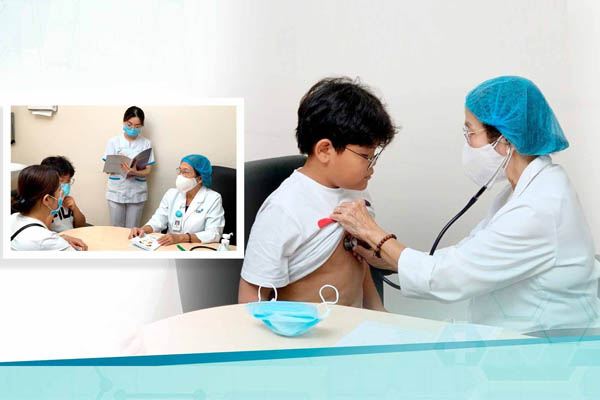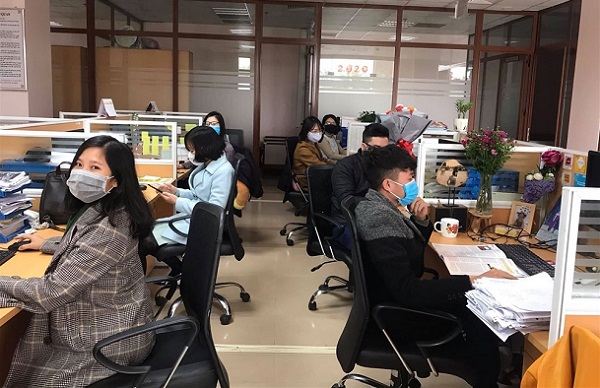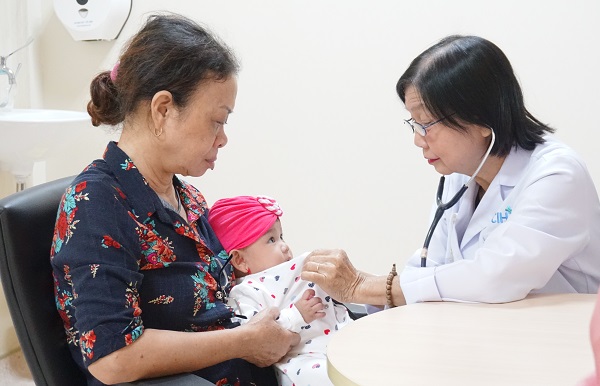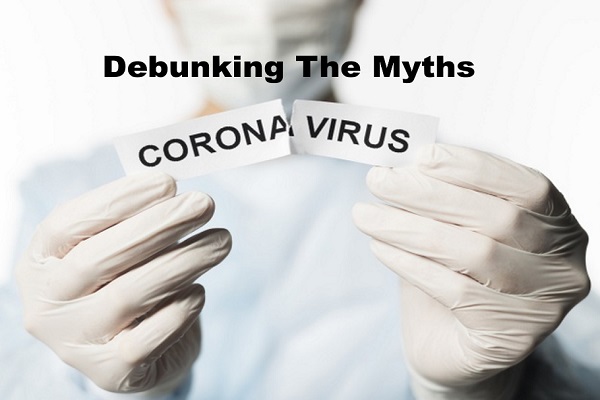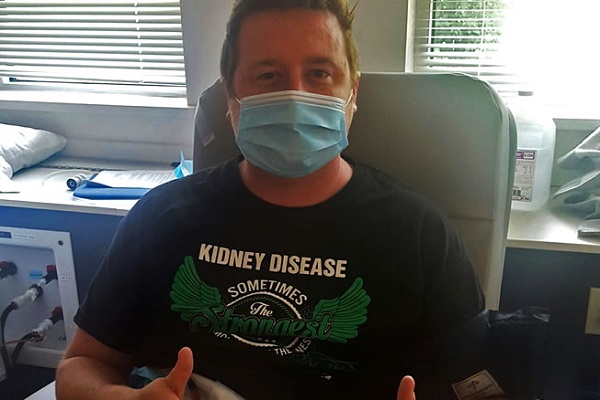An infection happens when a foreign organism enters a person’s body and causes harm. Some infections are mild and barely noticeable, but others are severe and life-threatening, and some are resistant to treatment. Infection can be transmitted in a variety of ways.
The organism uses that person’s body to sustain itself, reproduce, and colonize. These infectious organisms are known as pathogens. Examples of pathogens include bacteria, viruses, fungi, and prions. Pathogens can multiply and adapt quickly.
Some infections are mild and barely noticeable, but others are severe and life-threatening, and some are resistant to treatment. Infection can be transmitted in a variety of ways.
These include skin contact, bodily fluids, contact with feces, airborne particles, and touching an object that an infected person has also touched. How an infection spreads and its effect on the human body depend on the type of agent.
The immune system is an effective barrier against infectious agents, but colonies of pathogens may grow too large for the immune system to fight. At this stage, infections become harmful. Many pathogens give off toxins that trigger negative responses from the body.
Fast facts on infection
Infection is the effect of a foreign organism in the body. Types of infection include bacterial, fungal, viral, protozoan, parasitic, and prion disease. They are classified by the type of organism causing the infection.
Infections can range from mild inflammation in one person to an epidemic.
Types
Bacteria are one type of infectious agent. Bacteria, viruses, fungi, protozoa, parasites, and prions are different types of pathogen. They vary in their size, shape, function, genetic content, and how they act on the body. For example, viruses are smaller than bacteria, and they can enter a host and take over cells. However, bacteria can survive without a host.
Treatment will depend on the type of pathogen. This article will focus on the most common and deadly types of infection: Bacterial, viral, fungal, and prion.
1. Viral infections
The common cold is a viral infection. Viral infections are caused by a virus. Millions of types of virus are thought to exist, but only 5,000 types have been identified. Viruses contain a small piece of genetic code. They are protected by a coat of protein and fat.
Viruses invade a host and attach themselves to a cell. As they enter the cell, they release genetic material. The genetic material forces the cell to replicate, and the virus multiplies. When the cell dies, it releases new viruses, and these go on to infect new cells.
Not all viruses destroy their host cell. Some of them change the function of the cell. In this way, viruses such as human papillomavirus (HPV) or Epstein-Barr virus (EBV) can lead to cancer by forcing cells to replicate in an uncontrolled way.
They can also target certain age groups, such as infants or young children.
A virus may remain dormant for a period before multiplying again. The person with the virus can appear to have recovered but may get sick again when the virus reactivates.
Here are some examples of viral infections:
- the common cold, mainly caused by the rhinovirus, coronavirus, and adenovirus
- encephalitis and meningitis, caused by enteroviruses and the herpes viruses
- warts and skin infections, caused by the human papillomaviruses (HPV) and herpes simplex virus (HSV).
- gastroenteritis, caused by the novavirus
Other viral conditions include:
- Zika virus
- human immunodeficiency virus (HIV)
- hepatitis C
- polio
- influenza
- Dengue fever
- H1N1 swine flu
- Ebola
- Middle East respiratory syndrome (MERS-CoV)
Antiviral medications help in some cases. They can either prevent the virus from reproducing or boost the host’s immune system.
Antibiotics are not effective against viruses. Using antibiotics against a virus will not stop the virus, and it increases the risk of antibiotic resistance.
Most treatment aims to relieve symptoms while the immune system combats the virus without assistance from medicine.

2. Bacterial infections
Bacteria are single-celled microorganisms known as prokaryotes. There are estimated to be at least one nonillion bacteria on Earth. A nonillion is a one followed by 30 zeros. Much of Earth’s biomass is made up of bacteria.
Bacteria take three main shapes:
- Spherical: These are usually the simplest to treat and are known as cocci.
- Rod-shaped: These are called bacilli.
- Spiral: Coiled bacteria are known as spirilla. If the coil of a spirillus is particularly tight, they are known as spirochetes.
Bacteria can live in almost any kind of environment, from extreme heat to intense cold, and some can even survive in radioactive waste. There are trillions of strains of bacteria, and few of these cause diseases in humans. Some of them live inside the human body without causing harm, for example in the gut or airways. Some “good” bacteria attack “bad” bacteria and prevent them from causing sickness.
However, some bacterial diseases are deadly. These include:
- cholera
- diphtheria
- dysentery
- bubonic plague
- pneumonia
- tuberculosis
- typhoid
- typhus
Some examples of bacterial infections are:
- bacterial meningitis
- otitis media
- pneumonia
- tuberculosis
- upper respiratory tract infection
- gastritis
- food poisoning
- eye infections
- sinusitis
- urinary tract infections
- skin infections
- sexually transmitted diseases
Bacterial infections can be treated with antibiotics, but some strains become resistant and can survive the treatment.
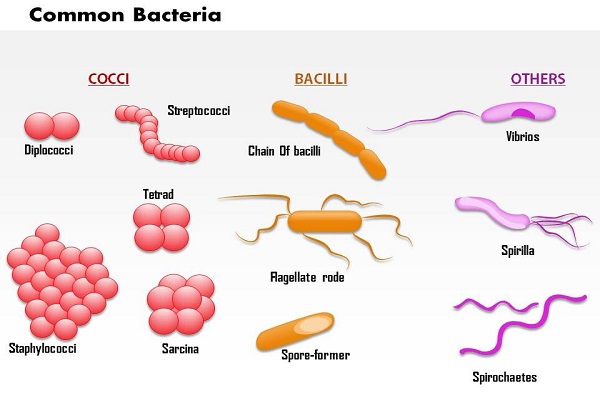
3. Fungal infection
Fungi reproduce by spreading spores. A fungus is an often multi-cellular parasite that can decompose and then absorb organic matter using an enzyme.
They almost always reproduce through the spreading of single-celled spores, and the structure of a fungus is normally long and cylindrical with small filaments branching from the main body. This structure is known as hypha.
There are approximately 51 million species of fungus.
Many fungal infections will appear in the upper layers of the skin, and some progress to the deeper layers. Inhaled fungal spores can lead to systemic fungal infections, such as thrush, or candidiasis. Systemic diseases affect the whole body.
The body usually has a population of “good” bacteria that help to maintain the balance of microorganisms in the intestines, mouth, vagina, and other parts of the body.
If enough “good” bacteria are destroyed, for example, by overusing antibiotics, fungi can grow and cause health problems for the host.
Those with a higher risk of developing a fungal infection include people who:
- use strong antibiotics for a long time
- have a weakened immune system, due, for example, to HIV or AIDS, diabetes, chemotherapy treatment, and those who have undergone a transplant, as they take medications to prevent their body from rejecting the new organ
Examples of fungal infections are:
- valley fever, or coccidioidomycosis
- athlete’s foot
- ringworm
- some eye infections
A rash can be an indicator of a fungal infection of the skin.
4. Prion disease
A prion is a protein that contains no genetic material. It is normally harmless, but if it folds into an abnormal shape, it can become a rogue agent and affect the structure of the brain or other parts of the nervous system.
Prions do not replicate or feed on the host but trigger abnormal behavior in the body’s cells and proteins. Prion diseases are rare, but they progress rapidly, and all are currently fatal.
Prions cause degenerative brain diseases, such as:
- bovine spongiform encephalopathy (BSE), also known as mad cow disease
- Creutzfeldt-Jakob disease (CJD)
Researchers have linked some cases of Alzheimer’s disease to prion infection.
5. Other infections
While the forms of infection mentioned above are the main types, there are others that can have an effect on the body. A single-celled organism with a nucleus can cause a protozoan infection. Protozoa commonly show features similar to animals, such as mobility, and can survive outside of the human body. They are most commonly transferred by contact with feces.
When they enter the human body, protozoa can also cause infection. Amebic dysentery is an example of a protozoan infection. Helminths are larger, multicellular organisms that tend to be visible to the naked eye when full-grown. This type of parasite includes flatworms and roundworms. These are also able to infect the human body.
Finally, ectoparasites such as mites, ticks, lice, and fleas can cause infection by attaching or burrowing into the skin. The term can also include blood-sucking arthropods, such as mosquitos, that transmit infection by consuming human blood.
Causes
The cause of an infection is said to be whichever type of organism has invaded the body. A particular virus, for example, will be the cause of a viral infection.
The effects of an infection, such as swelling or a runny nose, occur as a result of the immune system fighting the invading organism. A wound filling with pus, for example, occurs when white blood cells rush to the site of an injury to combat foreign bacteria.
Symptoms
The symptoms of an infection depend on the organism responsible as well as the site of the infection.
Viruses target specific cells, such as those in the genitals or upper respiratory tract. The rabies virus, for example, targets the nervous system. Some viruses target skin cells, causing warts. Others target a wider range of cells, leading to various symptoms. A flu virus can cause a runny nose, muscle aches, and an upset stomach.
A person with a bacterial infection will often experience redness and heat, swelling, fever, pain at the site of infection, and swollen lymph glands. A bacterial infection is less likely to affect a wide area of the body than a viral one.
A rash can be an indicator of a fungal infection of the skin. Common symptoms of prion diseases include brain damage, memory loss, and cognitive difficulties. They can also trigger the buildup of plaque in the brain, causing it to waste away.
Prevention
There is no single way to prevent all infectious diseases, but the following tips can reduce the risk of transmission:
- Wash your hands often, especially before and after preparing food and after using the bathroom.
- Clean surface areas and avoid leaving room-temperature food exposed when cooking.
- Receive any recommended vaccinations, and keep them up to date.
- Only take antibiotics when prescribed, and be sure to complete any recommended course even if symptoms improve earlier than anticipated.
- Disinfect rooms where there may be high concentrations of bacteria, such as the kitchen and bathroom.
- Practice safe sex by receiving regular STD checks, using condoms, or abstaining altogether.
- Avoid sharing personal items such a toothbrushes, combs, razorblades, drinking glasses, and kitchen utensils.
- Follow a doctor’s advice about traveling or working when you are ill, as you could infect others.
- A healthy, active lifestyle can help keep the immune system strong and able to defend the body against different kinds of infection.
Source: https://www.medicalnewstoday.com/
Should you have any questions, please do not hesitate to contact us:
City International Hospital
- Phone: (8428) 6280 3333, ext. 0
- Address: No. 3, 17A Street, Binh Tri Dong B Ward, Binh Tan Dist. (Next to AEON Mall Binh Tan). Ho Chi Minh City.
- Website: https://cih.com.vn/en/
- Email: This email address is being protected from spambots. You need JavaScript enabled to view it.
Pharmacity Clinic (Managed by City International Hospital)
- Clinic location: 44 Quoc Huong, Thao Dien, District 2, Ho Chi Minh City.
- Helpline: (028) 700 3350 - 093 357 6086
- Clinic hours: 7:30 a.m. - 8:30 p.m.
- Consultation fee: 70,000 dong per visit.
General disclaimer
Always consult your doctor regarding any concern about your health. Your doctor will be in the best position to give the appropriate medical advice. For suspected undesirable drug reaction and seek medical attention immediately.















